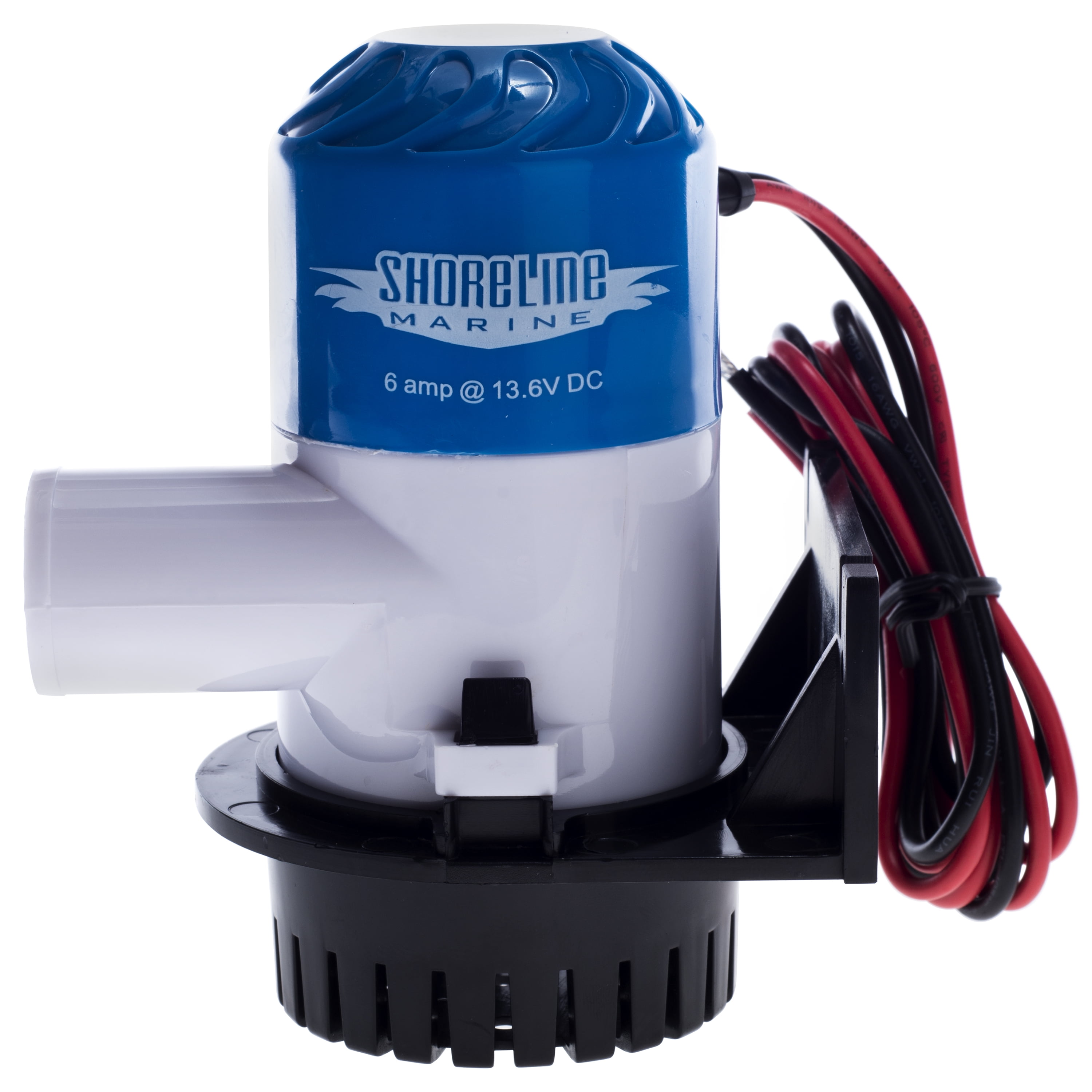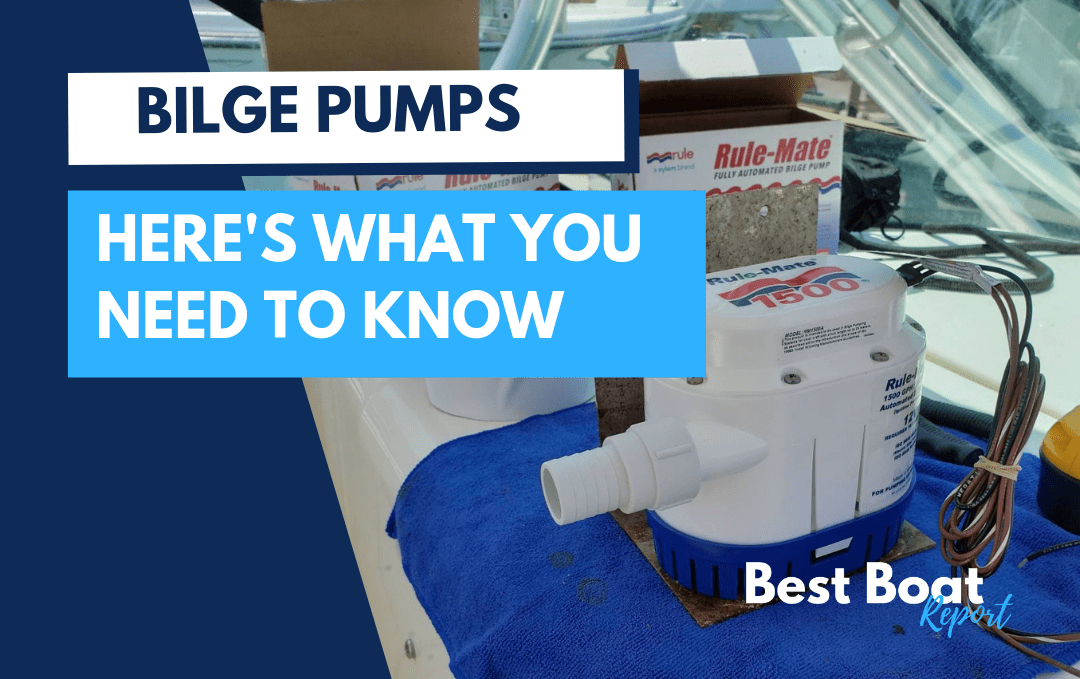
When I upgraded all my pumps and added a few more They were just 78 from the factory. Typically monohull boats under 20 feet long will only have a single bilge pump.

I agree with the two pump setup.
What size bilge pump do i need. Small to Medium sized powered vessels. - Under 55m - 1135 to 1892lph litres per hourunder 18 feet - 300 to 500gph gallons per hour - 55 to 7m - 1703 to 2649lph18 to 23 feet - 450 to 700gph. - 7 to 79m - 3785 to 4163lph22 to 26 feet - 100 to 1100gph.
I recommend the following total-bilge-pump capacities as rules of thumb. Boats less than 20 feet. 20 to 25 feet.
25 to 32 feet. 32 to 36 feet. 37 to 45 feet.
The number embossed on the pump is optimistic. Manual pumps can move substantial amounts of water up to 30 gallons per minute or so. With the exception of the higher-end pumps most are very tiring to use so be careful in your selection.
Each gallon of water weighs over 8lb. And pumping it 15 feet or so is a challenging task for both the pump and the pumper. Depends on what risk your boat is at.
Lots of through hull fittings or bait tanks with over flows then add more capacity. A 360gl pump after a few m of hose and 50cm lift will only pump about 20l per minute. A 20mm through hull transom pump failure will pump 10 times that into a boat.
Bilge pumps have ratings on lift hose sizes and output hose sizes. Depending on what size hose you have and the distance you may have to increase the hose size. When I upgraded all my pumps and added a few more They were just 78 from the factory.
They are now 1 18 as that was the required size per the bilge pump ratings for lift and distance. Since bilge pumps are critical to boat safety this often leads boaters to wonder how many bilge pumps do I need on my boat. The number of bilge pumps required on a boat is determined by the size of the boat at the hull design.
Typically monohull boats under 20 feet long will only have a single bilge pump. Multi-hull boats like a catamaran should have at least one bilge pump in. This implies 112J114s 98 watts of power or about 001 HP not including frictional losses.
But electric bilge-pumps do not seem to be rated in terms of output power so how can I tell. On the input side the pump I have uses 20 watts of electricity which sounds enough - but there are probably huge efficiency losses. Figure 10 The interaction of the system curve and pump curve.
The pump is built to a certain size for example it might have a 2 diameter discharge connection an 8 diameter impeller and appropriate size casing to go around this. It is intended to provide a flow range within 30-60 gpm and not 1-3 gpm. The best bilge pump in the world wont keep your boat dry if its not properly installed and maintained.
While bilge pump installations are fairly straightforward-and definitely within the scope of DIY projects-there are several factors to consider capacity wire size hose diameter fuse size before you begin and there are some good rules of thumb to follow. No bilge pumps arent necessarybut Id still have one. All it takes is one rogue wave or someone forgetting to put the plug in and youll with you had one.
One easy way to find out is to pour five gallons of water into the bilge and start your stopwatch when the bilge pump kicks in. A 500-gph pump should empty the bilge in 35 seconds if its working at its rated capacity. A 1500-gph pump should be able to do it in 12 seconds.
What size bilge pump is recommended for 62ft narrowboat. At the moment I have a rule 1500GPH. Thinking of changing it for a computerized rule 800GPH.
Bilge Pump General Maintenance. In the general maintenance of your bilge pump you need to follow the below-given steps for proper maintenance of your pump. 1 Clean the bilge.
Contaminated bilge water is particularly destructive for the small boat bilge pump. Contamination may clog the pump filters and prevent water from entering. So I think I am going with a 7 amp fuse in my blue seas fuse box.
The wires look like about 16 ga. Or may be 18 ga. Ill also try to dig the old fuse out now that I have cut that holder out of my wiring and see what it says if I can get it out.
10 years old time for some new wires. Here are some suggested pump capacities based on boat length. Understand that though t hese numbers may seem high in the event that you need a bilge pump for an emergency its better to have more bilge pump capacity.
2500 gph total using 2 pumps. 3000-3500 gph total using 2 pumps. 3500-4500 gph total using 3 pumps.
The biggest bilge pump in one of the most popular national marine discount center catalogs is a 3700 gph unit 62 gpm with no head. Add a 3 foot rise to the overboard discharge and its actual capacity may drop to only 30 gpm. Consider that this 3700 gph pump only has a 1 12 inch diameter discharge pipe.
For your bilge pump your existing 34 plumbing limits the GPH size. Rule bilge pumps with a 34 discharge port go as large as 800 GPH Johnson pumps up to 1000 GPH. Keep this in mind while shopping.
Bigger is generally better when it comes to bilge pumps. How big of bilge pump do i need. I agree with the two pump setup.
A 750 gph set low in the bilge for regular duty and a second 750 or larger set 6 or so higher so if the first pump is being overwhelmed the second pump will kick in. Remember bilge pumps are not intended to keep you boat from sinking when it gets a hole punched in the hull. So it is good to have a bilge pump on your boat regardless of the boat size at least for a backup.
For small boats such as non-motorized boats kayaks canoes dinghy or boats less than 15 feet in length around probably you dont need to install a bilge pump on your boat still you can do that if you want. Ever wonder what size bilge pump you need on your boat. The answer isnt always simple.
BoatUS Magazine associate editor Mark Corke walks you through some re. Depending on the size of your jon boat youll need to get a bilge pump that can handle your bilges capacity. The length of most jon boats lies between 8 and 24 feet which means your bilge pump should be able to handle a range of specific gallons per hour when pumping out water.
The bilge pump in the XP was already installed and actually it discharges below the water line I personally wouldnt have done it this way but as long as you loop the discharge hose above the water line its OK. A couple of notes I installed the power switch in order to switch off the bilge pump when not in use so as not to run the battery.